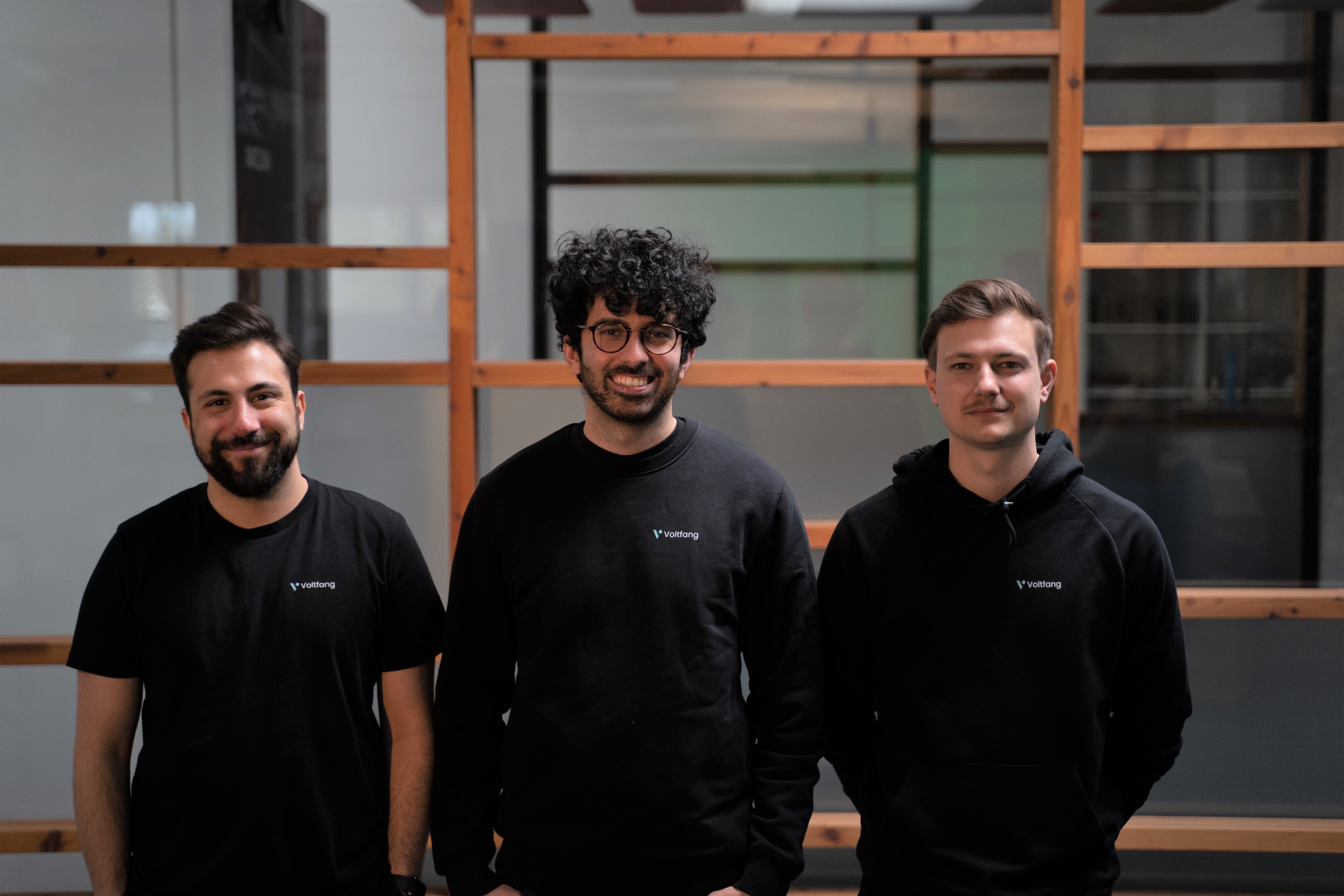STEPS & the company Voltfang
The goal of the STEPS project (STorage of Energy and Power Systems) is to help small and medium-sized enterprises (SMEs) in the North-West Europe region (NWE) bring their product to the market and increase their competitiveness. One of the SMEs selected in the first round of the project is Voltfang.
The start-up company was founded in July 2020 in Aachen by Roman Alberti, Afshin Doostdar and David Oudsandji, recent graduates of RWTH Aachen in the fields of Energy and Industrial Engineering. Together with a team of 10 they develop stationary battery storage systems from re-used Lithium-Ion batteries of electric vehicles for residential, commercial, and industrial customers.
With the Business Support Programme of STEPS, SMEs are supported by experts in the energy storage sector from Technical University of Darmstadt in Germany as well as University of Twente in the Netherlands. We asked Roman Alberti from Voltfang about their company and what the STEPS programme means for their growth.
As a very young company, how did you come up with your idea?
A few years ago, we bought a camper with friends. Due to a weak car battery, charging devices was not possible without the engine running, so we built a small PV system on the roof of the camper. However, the next challenge was that on a cloudy day, we had no electricity. This inspired us to install a mobile battery storage system in the camper to store the energy of a sunny day for worse times. Since we had a limited budget and we were aware of the controversial and environmentally harmful production of lithium-ion batteries, we were looking for a cheap and resource-saving alternative. So, we came up with the idea of using used battery modules from the electromobility sector. We then asked ourselves why the second-life use of batteries is not yet a far-reaching solution and dedicated ourselves to the topic.
What is the advantage of a battery storage system containing so-called 2nd-Life batteries?
The production of battery storage systems is resource- and energy-intensive and primarily involves conflict-prone materials, which are expected to become increasingly scarce in the future. There are currently no economic recycling options for lithium-ion batteries from electromobility. Second-life use of vehicle batteries maximises the life of these batteries by applying them in other areas. For example, discarded vehicle batteries typically have more than 80 % remaining capacity due to aging, making them ideal for use in stationary storage systems. This approach saves resources and offers a sustainable and affordable solution. If we make a comparison with a 10 kWh electricity storage unit as an example, up to 1 t CO2, 3 MWh energy, and 50 kg of resources can be saved compared to a conventional electricity storage unit, for which new batteries would have to be produced.
At what development stage is your product right now?
Our home storage variant, the Voltfang Home, is currently in the pre-development phase. Series production is scheduled to start at the beginning of 2023, with prototype development and piloting taking place in 2022. The Voltfang Industrial, the industrial version of our battery storage solution, is already in the pilot phase and there are already three active, fully functional deployments. This now needs to be fully tested in the 2nd voucher and complete certification so that we can start series production at the beginning of 2022.
What challenges does re-using electric vehicles batteries involve?
The used batteries that reach us are like a black box at first. If we are lucky, we know the mileage of the car and the age of the battery, but that is usually all the information we have. That's why we are currently developing our own battery testing procedure based on the few second-life standards currently available and taking the testing process further. This elicits the relevant safety and energy parameters of the ageing process from the battery. The diagnostic analysis of batteries would be significantly simplified by the currently discussed battery passport, which is expected to be introduced in 2026. This will function like an electronic file that accompanies the battery everywhere.
How will the STEPS Business Support Programme help your company bring your product to the market?
The competent advice of the TU Darmstadt staff on the topics of safety concept, CE conformity, risk analysis, system limits, and the corresponding safety guidelines and standards provides us with the decisive input to achieve market readiness and certification of our product. The new findings flow directly into our development iterations so that we can design our product safely in anticipation of certification. In addition, the scientists of the University of Twente support us when it comes to the topic of electromagnetic compatibility. In the second phase, the topics addressed will now be tested extensively and a further milestone on the way to series production will be reached. Finally, we hope to be able to further expand our partner network and become even more effective in the public eye.
What are your business expectations and ambitions for the future?
Subsequently, and during the term of the STEPS programme, product certification of the Voltfang Industrial must be carried out. This will allow Voltfang to deliver the first products and move into small batch production at the beginning of 2022. The long-term goal is unfolding the series production of the Voltfang Industrial starting in 2023. With the increasing turnover, the company should grow organically and steadily hire more full-time employees. The hoped-for continuous inflow of financial resources should make it possible to continuously develop the existing product further and to finance the development of the home storage variant. In the long term, Voltfang wants to establish itself in the battery storage market and demonstrate the enormous potential of second-life battery storages.
Contact details:
Voltfang website: https://voltfang.de/
LinkedIn: https://www.linkedin.com/company/voltfang/
STEPS Project Website: https://www.nweurope.eu/projects/project-search/steps-storage-of-energy-power-systems-in-nwe/
Institute for Mechatronic Systems at TU Darmstadt: https://www.ims.tu-darmstadt.de/institut/startseite_ims/index.en.jsp
Power Electronics & EMC Group at University of Twente: https://www.utwente.nl/en/eemcs/pe/

